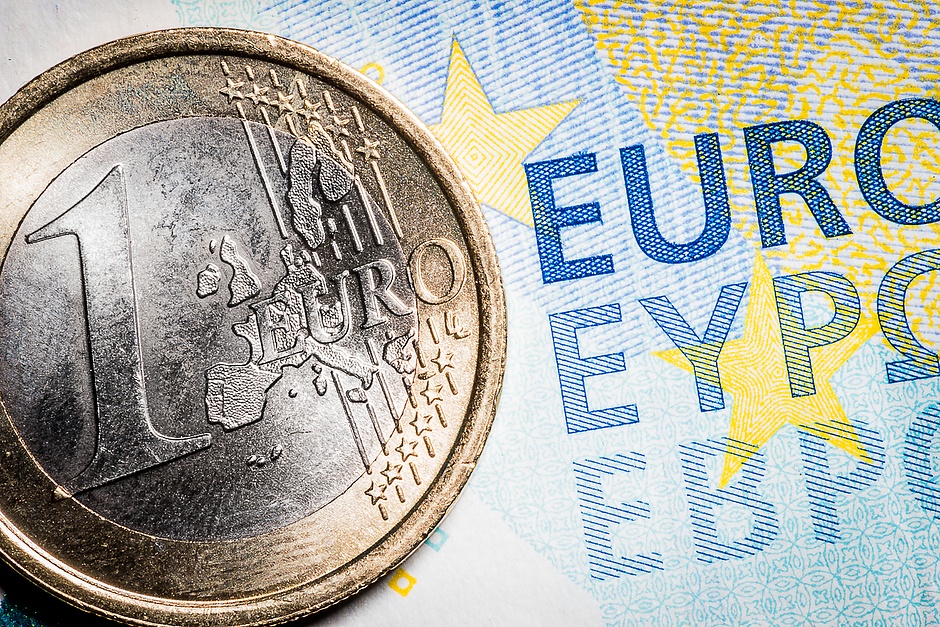EUR/USD rebounds on Thursday after midweek pullback
- EUR/USD recovered ground on Thursday, sticking close to near-term highs.
- Despite recovery, Fiber remains on the south side of 1.1200.
- US PCE inflation to be the week’s key data print.

EUR/USD tuned back into the high end on Thursday, getting bolstered by a broad-market selloff in the Greenback. US data that printed better than expected helped to ease concerns of a possible economic slowdown within the US economy looming over the horizon.
The US economy still isn’t out of the woods yet, with key activity data still easing, but the hard edge of recession fears has been filed off. Friday still has one final hurdle for data-hounds to lurch over, however. US Personal Consumption Expenditure (PCE) inflation figures due during the last trading session of the week could throw a spanner in the works if they come out wildly out-of-tune with forecasts.
Across the Atlantic, pan-EU confidence indicators are also expected on Friday, but most of these indexed surveys are expected to stick close to previous figures. EUR traders will be much more interested in European Harmonized Index of Consumer Prices (HICP) inflation numbers for September, which are due next Tuesday.
The Federal Reserve's recent decision to cut interest rates by 50 basis points raised apprehensions in global markets, with some investors fearing that the drastic move was a response to an impending economic downturn in the US. However, Fed Chair Jerome Powell clarified that the rate cut was a proactive measure aimed at supporting the US labor market, rather than a reactive response to recessionary signals.
Positive data on US Durable Goods Orders and weekly Initial Jobless Claims further reinforced the Fed's position, with both indicators surpassing expectations. The narrative of a "soft landing" for the economy remained intact. The upcoming release of the Personal Consumption Expenditure (PCE) inflation data on Friday will serve as a crucial litmus test for evaluating the impact of the recent rate cut by the Fed.
In August, US Durable Goods Orders stagnated at 0.0% month-on-month, falling short of the previous month's significant growth but still outperforming the projected contraction of 2.6%. Additionally, the Initial Jobless Claims for the week ending September 20 showed a decrease to 218K, beating the anticipated 225K and signaling a decline from the revised figure of 222K in the preceding week.
EUR/USD price forecast
Despite Thursday’s bullish bounceback, Fiber remains capped below the 1.1200 handle. Bidders are struggling to muscle EUR/USD back into the high end, but a lack of meaningful momentum in the hands of sellers is limiting options for a downside swing.
The pair remains well-bid on the north side of the 50-day Exponential Moving Average (EMA) near 1.1040, while price action still has plenty of room to move into the top end and reclaim chart paper above 1.1200.
EUR/USD daily chart

Euro FAQs
The Euro is the currency for the 20 European Union countries that belong to the Eurozone. It is the second most heavily traded currency in the world behind the US Dollar. In 2022, it accounted for 31% of all foreign exchange transactions, with an average daily turnover of over $2.2 trillion a day. EUR/USD is the most heavily traded currency pair in the world, accounting for an estimated 30% off all transactions, followed by EUR/JPY (4%), EUR/GBP (3%) and EUR/AUD (2%).
The European Central Bank (ECB) in Frankfurt, Germany, is the reserve bank for the Eurozone. The ECB sets interest rates and manages monetary policy. The ECB’s primary mandate is to maintain price stability, which means either controlling inflation or stimulating growth. Its primary tool is the raising or lowering of interest rates. Relatively high interest rates – or the expectation of higher rates – will usually benefit the Euro and vice versa. The ECB Governing Council makes monetary policy decisions at meetings held eight times a year. Decisions are made by heads of the Eurozone national banks and six permanent members, including the President of the ECB, Christine Lagarde.
Eurozone inflation data, measured by the Harmonized Index of Consumer Prices (HICP), is an important econometric for the Euro. If inflation rises more than expected, especially if above the ECB’s 2% target, it obliges the ECB to raise interest rates to bring it back under control. Relatively high interest rates compared to its counterparts will usually benefit the Euro, as it makes the region more attractive as a place for global investors to park their money.
Data releases gauge the health of the economy and can impact on the Euro. Indicators such as GDP, Manufacturing and Services PMIs, employment, and consumer sentiment surveys can all influence the direction of the single currency. A strong economy is good for the Euro. Not only does it attract more foreign investment but it may encourage the ECB to put up interest rates, which will directly strengthen the Euro. Otherwise, if economic data is weak, the Euro is likely to fall. Economic data for the four largest economies in the euro area (Germany, France, Italy and Spain) are especially significant, as they account for 75% of the Eurozone’s economy.
Another significant data release for the Euro is the Trade Balance. This indicator measures the difference between what a country earns from its exports and what it spends on imports over a given period. If a country produces highly sought after exports then its currency will gain in value purely from the extra demand created from foreign buyers seeking to purchase these goods. Therefore, a positive net Trade Balance strengthens a currency and vice versa for a negative balance.
Author

Joshua Gibson
FXStreet
Joshua joins the FXStreet team as an Economics and Finance double major from Vancouver Island University with twelve years' experience as an independent trader focusing on technical analysis.


















